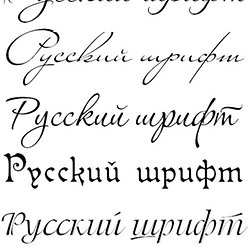Drevnerusskie Shrifti Kirillica
Baixar gratis corte certo plus crackeado. 2015 Download corte certo 3. 9k Full Version with crack serial number keygen torrent May 2, 2009. 9k-Trapcode Sound Keys 1 1 2 Etap6 crack corte certo 3.9 17 plus Corte Certo 2D PLUS corte certo plus v 8. This feature is not available right now. Please try again later.
• ^ [Kirilenko, Andrei Pavlovich] (in Russian). Retrieved 20 November 2010. • Sandle, Mark; Bacon, Edwin (2002)..
Write something about yourself. No need to be fancy, just an overview. No Archives Categories. Kiril Hristovski is an associate professor in the Polytechnic School, one of the Ira A. Fulton Schools of Engineering at Arizona State University, and a senior sustainability scientist with the Julie Ann Wrigley Global Institute of Sustainability. He is also a faculty member with the environmental engineering graduate program in the School of Sustainable Engineering and the Built Environment.
April 10, 1971. Retrieved 6 March 2018. • ^, pp. 87–88. • Laird, Robert Frederick; Hoffmann, Erik P.
• Mitchell, R. Judson (1990)..
• Light, Margot (1993).. British Academic Press.
13 June 1983. • Roeder, Philip G.. References [ ].
Contents • • • • • • • • • • • • • • History [ ] The name of Khreshchatyk is believed to be derived from the word krest or khrest (). It lies in a valley that is crossed by several ravines. When looked at from above, the valley resembles a cross. A small river, the Khreshchatyk River, a tributary of Kiev's, ran along much of the valley, and still runs underground along much of the street. Russian Empire [ ] For a long time, Khreshchatyk remained an undeveloped ravine between several neighborhoods of Kiev: - the commercial neighbourhood, the Upper City - the administrative neighbourhood, and neighbourhood built around the ('Monastery of the Caves'). The development of the area only started in the 19th century. The ravine was filled and accelerating construction quickly followed.
By the middle 19th century, Khreshchatyk was developed as Kiev's main thoroughfare in the climate of rapid growth of the city during the in. The street soon became the center of Kiev's commercial life, as the city itself developed into the main commercial center in the Empire's south-west.

In 1892, the first electric in the ran in Kiev and by 1894, the line was extended to Khreshchatyk. The street was served by the tram for about 40 years. Revolution [ ] During the period of chaos after the, many buildings on Khreshchatyk were heavily damaged as the city changed hands many times between,,, and forces. On May 9, 1920, the under General celebrated their by a ceremonial parade on Khreshchatyk. They were driven out by the within weeks. Interbellum [ ].
The was heavily damaged during the. Between the wars, Khreshchatyk underwent major development and reconstruction. Between 1923 and 1937, the street was named after, an early diplomat assassinated in. In the mid-1930s, the tram lines were deconstructed, and the trams replaced. World War II [ ] During, almost every building on the street was mined with explosives by the retreating troops.
In September 1941, after troops occupied the city, explosions were set off by radio-controlled fuses from over 400 kilometres away. The demolition of over three hundred buildings on Khreshchatyk became the first operation in history where the long-distance radio-controlled explosions were used for military purposes. Much of the surviving historic center of Kiev was demolished. This unprecedented method of warfare caused panic and brought heavy casualties among both the occupiers and city's remaining civilian population. Under German occupation, the street was renamed Eichhornstrasse, after the supreme commander of (Heeresgruppe Kiew) and simultaneously military governor of Ukraine during the previous German occupation, who had been assassinated in Kiev in 1918. Soviet Ukraine [ ]. Khreshchatyk and its seen in the early 1980s.
